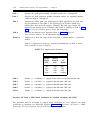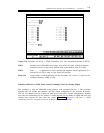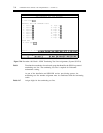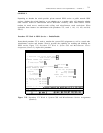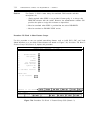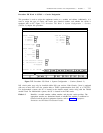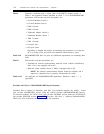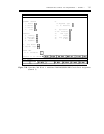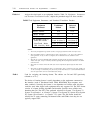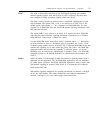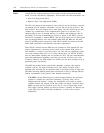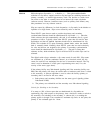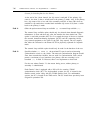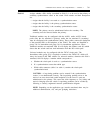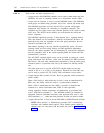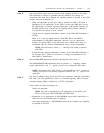
7-56
ADMINISTRATION OPTIONS AND REQUIREMENTS — GENERIC 2
Fields 1-4
Assigns the circuit pack to an equipment location. Table 7-6, Equipment Parameters
and Permitted Translation Encodes, depicts the permitted ranges for these encodes.
TABLE 7-6. Equipment Parameters and Permitted Translation Encodes
Equipment
Traditional Universal
Parameter
Module Module
Module Number
0-30
0-30
Cabinet Number
0-7
0
DS1 Carrier ID
0-3
c-e
Slot Numbers (Note 1)
ISDN-PRI Trunks
5 and 18 (Note 2)
1-19 (Note 3)
Line+Trunk Mode
5 and 18 (Note 2)
1-19 (Note 4)
OPS Line-Only Mode
0,5,13, and 18
1-19 (Note 5)
NOTES:
1.
2.
3.
4.
5.
The circuit pack application type (Field 14) will to a large degree determine which slots may be used.
When a DS1/MFAT carrier is configured with two DS1s, physical slots 3, 8, 16, and 21 are available for
other applications. If only one DS1 is configured, then six additional slots are available for other
applications.
When the slot is used for ISDN-PRI trunk applications the adjacent right slot must be configured with the
TN555 circuit pack, except in nonfacility associated signaling (NFAS) arrangements that have no D-channel
on this DS1 link.
When used for a mixture of lines and trunks (two slots are required) the adjacent right slot must remain
vacant.
When used for OPS line applications, there is no requirement to leave a vacant slot to the right. Actually, all
Field 6
19 slots (1 through 19 consecutively) may be used to provide OPS. However, it is still recommended that the
slot to the right remain vacant to accommodate future changes.
Used for assigning the framing format. The choices are D4 and ESF (previously
referred to as F
e ).
The choice of framing format is totally dependent on the equipment connected to
the interface (such as D4-channel bank, CDM, BCM32000, host computer, and
other switches). Normally the format is not dependent on facilities used, but there
could be some older digital radio equipment that only supports D4. The ESF format
consists of a better framing algorithm and therefore provides more reliable error
detection than D4. The ESF is the preferred selection for System 75-to-System 75,
System 75-to-Generic 1 or -Generic 2, System 75-to-System 85, System 85-to-System
85, System 85-to-Generic 1 or -Generic 2 T1-spans. The D4 format should be
selected for T1-spans connecting D4-channel banks and CDMs since they do not
typically support ESF.



